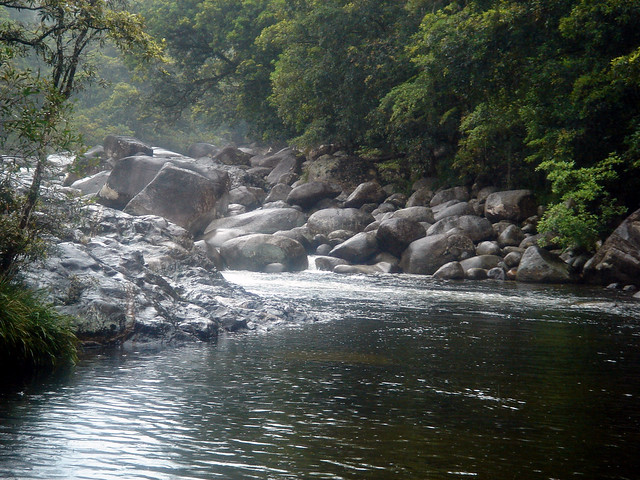By concentrating the captured runoff, areas of Maryland properties typically receiving 44 inches of rainfall per year can easily get double that amount, making them like miniature rainforests. Forest gardens are very good absorbers of groundwater, as are rain gardens.
 |
| Photo by Dion Gillard |
One of my rain barrels discharges through a 25 foot garden hose into a French drain which discharges to a rock filled swale that empties into a rain garden 80 feet from the house. That easily meets the minimum distance requirement of 15 feet from the foundation and is also at a low point on the corner of my property. The rain garden contains a good deal of biochar and compost and I am planning to fill the cracks between the swale rocks with biochar once I obtain plants that grow well in rock gardens. I also have rain barrels for the other three downspouts on my home, two of which are for keeping mushroom logs watered and one for watering the five terraced garden beds in the backyard.
For water coming off an impervious surface such as a patio onto a lawn, a swale or series of them can be added that run on contour. These are interspersed with raised bed gardens that use the water captured by the swales. Yards with slopes up to 33% can use this device, so where such slopes themselves are the source of runoff, these would also be very helpful. The key to making all these alterations efficacious is gardening. To some that may create the impression of unending toil, but it needn't since the gardens will be watered by the rain flowing to them and can be kept moist and fed with the help of biochar.
